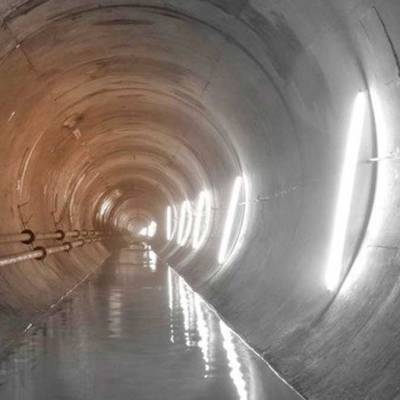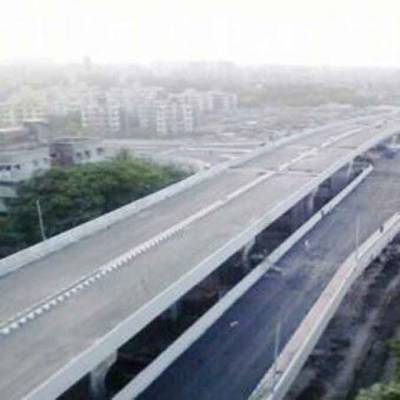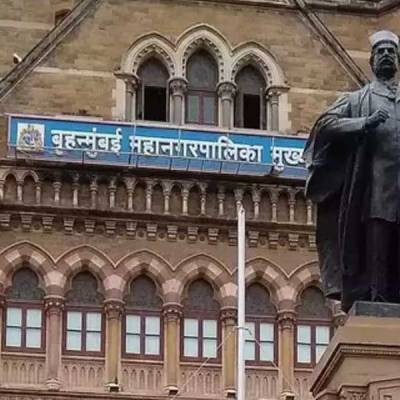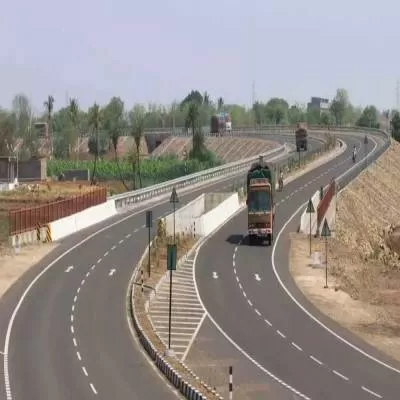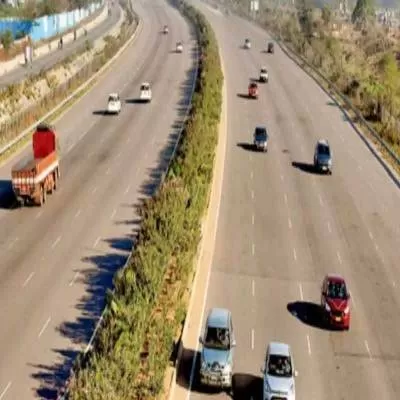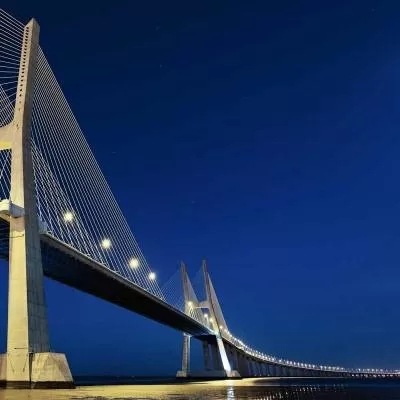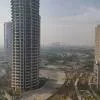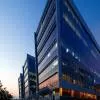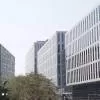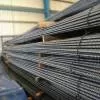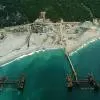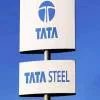- Home
- Infrastructure Transport
- ROADS & HIGHWAYS
- In the Fast Lane
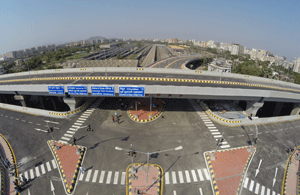
In the Fast Lane
Not so long ago, it used to take between 90 minutes and two hours to travel from Mumbai´s western suburbs to eastern suburbs. However, with the new six-lane SCLR, one can travel from Santacruz to Chembur in just 17 minutes! The road links the Western Express Highway (WEH) and the Eastern Express Highway (EEH), and eases traffic congestion at Amar Mahal Junction, Vakola, Kalanagar Junction, Sion and Kurla. The project was born in 2002, when the Maharashtra Government, Indian Railways and the Mumbai Metropolitan Region Development Authority (MMRDA), with financial assistance from the World Bank, decided to undertake the Mumbai Urban Transport Project (MUTP) to solve the transport issues of the megapolis.
Bird´s eye view
The project has been executed in two sections. The first was awarded to Patel Engineering, and the section, which was awarded to Gammon India, included the major work for this project. ´This included the main viaduct part of SCLR Section-II, ie, the main arm of 1.5 km, the double-deck flyover of 0.69 km and an additional cross arm of 0.9 km,´ says Amitesh Ranjan, Deputy General Manager, Gammon India Ltd. ´The main flyover and the double-decker flyover cross over the central line tracks that go towards the EEH.´ SCLR also has two arms; one for the Lokmanya Tilak Terminus (LTT) and the other for Kurla Dairy, which crosses the Harbour Line tracks. The total length of the project is 6.45 km; while the top deck caters to traffic between Amar Mahal and Vakola junctions, the lower deck provides connectivity between LTT and Kurla Dairy in Nehru Nagar from Kalina.
Tech trip
Reinforced cement concrete (RCC) and concrete grade of M 50 have been used in this project. For PSC girders, M 40 and M 50 grade concrete and Fe 500 reinforcement steel have been used. Over the railway spans, composite structures have been used; for instance, in the superstructures, steel plate girders have been used with RCC deck slabs cast over them.
The bridge was designed for a pile foundation of 1,200 mm diameter bored cast in-situ piles. ´The entire project has been created by using 181 piers and 136 pier caps,´ shares Ranjan. ´The pier cap in the bridge portion is flare-shaped and the superstructure of the viaduct portion is constructed by a cast in-situ box girder.´ As this project crosses over the railway tracks, it was a challenge to launch 14 girders on site because each weighed 70 tonne. In this area, steel girders have also been launched. As the girders were fabricated in a factory, they were transported in segments as per the requirement on site and assembled.
Apart from this, the superstructure for the railway portions is cast in-situ I girder and prefabricated steel girders. ´A total of 102 PSC box girders has been cast,´ elaborates Ranjan. ´Of this, 58 box girders were used for the first level and 44 for the second. The length of the box girders varies from 21 m to 49 m and the width from 8.6 m to 10.6 m. The superstructure consists of a total of 198 PSC I girders.´
About 140 PSC I girders have been used for the LTT junction area with the length varying from 15.5 m to 31.7 m for different cross-sections at the junction area. The railway portion includes a 01 span and 05 span of prefabricated steel girders on the Harbour and Central Lines, respectively.
At the first level of the flyover, the main line road-over-bridge (ROB) and Harbour Line ROB of Nehru Nagar link join at an elevation of about 7 m above ground to form the junction. This junction serves the terminus-bound traffic from SCLR and Kurla East. The double-decker flyover, from Santacruz side goes towards EEH and crosses the junction at an elevation of 6 m above the first level.
In the making
The maximum size of the pier cap is 57.88 m + 2.9 m + 3.5 m near LTT. Ranjan adds, ´For casting of PSC I girders in the junction area, owing to its diverse lengths, the transverse distance varied between the two I girders. Because of this, we were not able to complete the I girders casting by one-time erection with the supporting arrangement for a single span. Hence, we have erected two to three supporting arrangements for casting I girders.
Owing to space constraints, this was not possible for all the spans. Hence,
I girders were cast with a single supporting arrangement and side shifts.´
The junction height of the second level is about 18 m and the length of the box girder is 49 m. After studying the condition of the area, an invert truss of 30 m length was erected and for the balance 19 m, trestles were erected as support arrangement.
Regarding the LTT area, Ranjan says, ´This junction area of 7,000 sq m was the biggest challenge to cast 140 PSC I girders at the first level and 10 box girders at the second level. However, this challenge was overcome by carrying out sequencing of the structure, pathway diversion, pile rig movement, crane movement and supporting arrangement.´
Roadblocks
Although SCLR was proposed long before, issues related to rehabilitation and land acquisition acted as barriers and, hence, consumed a significant amount of time for the project to hit the ground. Ranjan shares, ´If you go according to the percentage, 46 per cent of the land belongs to the Railways, 26 per cent to MHADA and the balance land belongs to also MMRDA. Hence, we had to also acquire permissions from other departments.´
Apart from this, there have been many changes in the alignment of the project. The Baseline Socio-Economic Survey (BSES) was finalised in December 2004. According to this revised BSES, a total of 3,167 structures would be affected, including 2,575 residential, 540 commercial, 33 residential-cum-commercial, and 19 community or religious structures. Nearly 3,500 people, as well as 350 MHADA tenements, who were displaced by SCLR have been rehabilitated. The World Bank initially provided assistance by way of loans to finance the project, but withdrew owing to recurring delays in completing the project. A major delay also occurred in getting clearance from the Central Railway (CR) to construct a 50.9-m bridge over the Central Line. Despite receiving the request in 2007, CR took five years and asked for four changes in the design before finally approving construction in July 2012. The approval came with the rider that it could only start construction in October 2012, after the monsoon. Today, to the relief of Mumbai´s harried commuters, the project stands complete.
(For the full version, log on to www.ConstructionWorld.in/webx) Project details
Completion: 2014
Cost: Rs. 325 crore
Total length: 6.45 km
Owner: MMRDA.
Tel: 022-2659 0001.
Website: www.mmrda.maharashtra.gov.in
Contractor: Patel Engineering.
Tel: 022-2678 2916.
E-mail: headoffice@pateleng.com
Website: www.patelengineering.in;
Gammon India Ltd.
Tel: 022-6111 4000.
E-mail: gammon@gammonindia.com
Website: www.gammonindia.com
Project management consultants: Louis Berger Group Inc.
Tel: 040-2338 6911.
Website: www.louisberger.com
Nodal agency: MSRDC.
Tel: 022-2369 6109.
E-mail: info@msrdc.org
Website: www.msrdc.org and MMRDA.
The Santacruz-Chembur Link Road (SCLR) in Mumbai is among India´s first double-deck flyovers. CW explores the construction dimensions of this project. Not so long ago, it used to take between 90 minutes and two hours to travel from Mumbai´s western suburbs to eastern suburbs. However, with the new six-lane SCLR, one can travel from Santacruz to Chembur in just 17 minutes! The road links the Western Express Highway (WEH) and the Eastern Express Highway (EEH), and eases traffic congestion at Amar Mahal Junction, Vakola, Kalanagar Junction, Sion and Kurla. The project was born in 2002, when the Maharashtra Government, Indian Railways and the Mumbai Metropolitan Region Development Authority (MMRDA), with financial assistance from the World Bank, decided to undertake the Mumbai Urban Transport Project (MUTP) to solve the transport issues of the megapolis. Bird´s eye view The project has been executed in two sections. The first was awarded to Patel Engineering, and the section, which was awarded to Gammon India, included the major work for this project. ´This included the main viaduct part of SCLR Section-II, ie, the main arm of 1.5 km, the double-deck flyover of 0.69 km and an additional cross arm of 0.9 km,´ says Amitesh Ranjan, Deputy General Manager, Gammon India Ltd. ´The main flyover and the double-decker flyover cross over the central line tracks that go towards the EEH.´ SCLR also has two arms; one for the Lokmanya Tilak Terminus (LTT) and the other for Kurla Dairy, which crosses the Harbour Line tracks. The total length of the project is 6.45 km; while the top deck caters to traffic between Amar Mahal and Vakola junctions, the lower deck provides connectivity between LTT and Kurla Dairy in Nehru Nagar from Kalina. Tech trip Reinforced cement concrete (RCC) and concrete grade of M 50 have been used in this project. For PSC girders, M 40 and M 50 grade concrete and Fe 500 reinforcement steel have been used. Over the railway spans, composite structures have been used; for instance, in the superstructures, steel plate girders have been used with RCC deck slabs cast over them. The bridge was designed for a pile foundation of 1,200 mm diameter bored cast in-situ piles. ´The entire project has been created by using 181 piers and 136 pier caps,´ shares Ranjan. ´The pier cap in the bridge portion is flare-shaped and the superstructure of the viaduct portion is constructed by a cast in-situ box girder.´ As this project crosses over the railway tracks, it was a challenge to launch 14 girders on site because each weighed 70 tonne. In this area, steel girders have also been launched. As the girders were fabricated in a factory, they were transported in segments as per the requirement on site and assembled. Apart from this, the superstructure for the railway portions is cast in-situ I girder and prefabricated steel girders. ´A total of 102 PSC box girders has been cast,´ elaborates Ranjan. ´Of this, 58 box girders were used for the first level and 44 for the second. The length of the box girders varies from 21 m to 49 m and the width from 8.6 m to 10.6 m. The superstructure consists of a total of 198 PSC I girders.´ About 140 PSC I girders have been used for the LTT junction area with the length varying from 15.5 m to 31.7 m for different cross-sections at the junction area. The railway portion includes a 01 span and 05 span of prefabricated steel girders on the Harbour and Central Lines, respectively. At the first level of the flyover, the main line road-over-bridge (ROB) and Harbour Line ROB of Nehru Nagar link join at an elevation of about 7 m above ground to form the junction. This junction serves the terminus-bound traffic from SCLR and Kurla East. The double-decker flyover, from Santacruz side goes towards EEH and crosses the junction at an elevation of 6 m above the first level. In the making The maximum size of the pier cap is 57.88 m + 2.9 m + 3.5 m near LTT. Ranjan adds, ´For casting of PSC I girders in the junction area, owing to its diverse lengths, the transverse distance varied between the two I girders. Because of this, we were not able to complete the I girders casting by one-time erection with the supporting arrangement for a single span. Hence, we have erected two to three supporting arrangements for casting I girders. Owing to space constraints, this was not possible for all the spans. Hence, I girders were cast with a single supporting arrangement and side shifts.´ The junction height of the second level is about 18 m and the length of the box girder is 49 m. After studying the condition of the area, an invert truss of 30 m length was erected and for the balance 19 m, trestles were erected as support arrangement. Regarding the LTT area, Ranjan says, ´This junction area of 7,000 sq m was the biggest challenge to cast 140 PSC I girders at the first level and 10 box girders at the second level. However, this challenge was overcome by carrying out sequencing of the structure, pathway diversion, pile rig movement, crane movement and supporting arrangement.´ Roadblocks Although SCLR was proposed long before, issues related to rehabilitation and land acquisition acted as barriers and, hence, consumed a significant amount of time for the project to hit the ground. Ranjan shares, ´If you go according to the percentage, 46 per cent of the land belongs to the Railways, 26 per cent to MHADA and the balance land belongs to also MMRDA. Hence, we had to also acquire permissions from other departments.´ Apart from this, there have been many changes in the alignment of the project. The Baseline Socio-Economic Survey (BSES) was finalised in December 2004. According to this revised BSES, a total of 3,167 structures would be affected, including 2,575 residential, 540 commercial, 33 residential-cum-commercial, and 19 community or religious structures. Nearly 3,500 people, as well as 350 MHADA tenements, who were displaced by SCLR have been rehabilitated. The World Bank initially provided assistance by way of loans to finance the project, but withdrew owing to recurring delays in completing the project. A major delay also occurred in getting clearance from the Central Railway (CR) to construct a 50.9-m bridge over the Central Line. Despite receiving the request in 2007, CR took five years and asked for four changes in the design before finally approving construction in July 2012. The approval came with the rider that it could only start construction in October 2012, after the monsoon. Today, to the relief of Mumbai´s harried commuters, the project stands complete. (For the full version, log on to www.ConstructionWorld.in/webx) Project details Completion: 2014 Cost: Rs. 325 crore Total length: 6.45 km Owner: MMRDA. Tel: 022-2659 0001. Website: www.mmrda.maharashtra.gov.in Contractor: Patel Engineering. Tel: 022-2678 2916. E-mail: headoffice@pateleng.com Website: www.patelengineering.in; Gammon India Ltd. Tel: 022-6111 4000. E-mail: gammon@gammonindia.com Website: www.gammonindia.com Project management consultants: Louis Berger Group Inc. Tel: 040-2338 6911. Website: www.louisberger.com Nodal agency: MSRDC. Tel: 022-2369 6109. E-mail: info@msrdc.org Website: www.msrdc.org and MMRDA.


